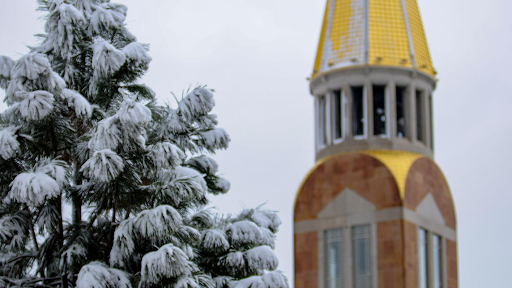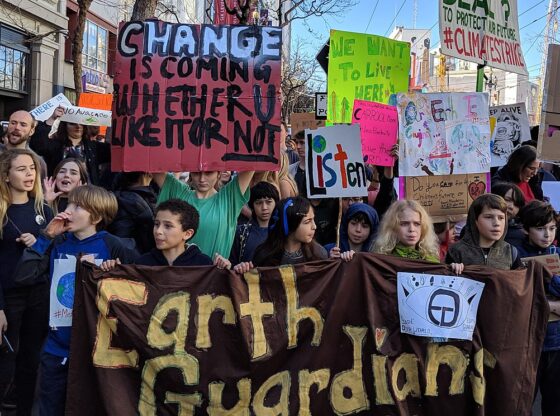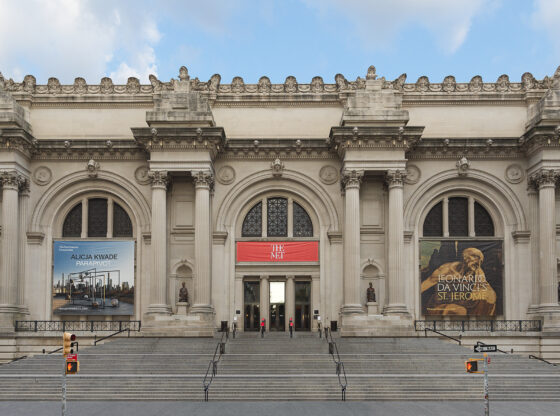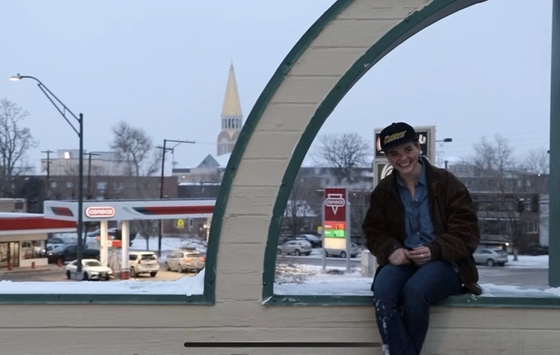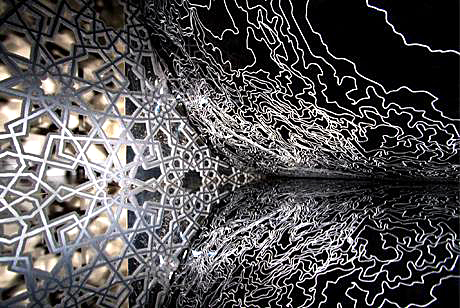
Been down to the Denver Art Museum lately? DU Emergent Digital Practices associate professor Laleh Mehran has an exhibit there in the Fuse Box Gallery called “Men of God, Men of Nature” that encourages discussion and thought.
Contrasting with the architecture of the gallery, which has no right angles, Mehran’s installation consists of a single black cube measuring 12 by 12 by 12 cubic feet. The outer surface ripples with diverse topography, while stairs lead to an immersive inside of the cube.
The viewer, upon entrance, is inundated with Islamic geometrical patterns, motion activated video of organic spheres and rich audio manipulated from prominent Judaic, Islamic and Christian songs.
According to Mehran, the piece represents three basic ideologies that define us.
“A lot of my work deals with the essential dialogue that has to do with basic ideologies. For me, it has to do with the intersectionality of politics, religion and science,” said Mehran. “In this piece ‘Men of God, Men of Nature,’ I’m continuing that dialogue.”
Mehran admits that her expectations of visitors to the exhibit are “ambitious,” asking visitors to consider these the three ideologies of politics, religion and science.
“I ask visitors when they go through my space to think how we interact with them, what they really mean and to be in some ways more critical of our beliefs and how we’re influenced by them to become who we are, how we are and how our behavior impacts as we go through life, both on a local and an international scale,” said Mehran. “I ask a lot, but I believe people are capable.”
When visiting her exhibit, Mehran finds the conversations she has had with people, from the spiritual to the scientists, invigorating.
“I’ve had incredible conversations on every level.” said Mehran. “It’s really interesting to hear what they have to say and they’re all so thoughtful. I’ve been really honored and flattered that people give so much consideration when they go through my piece.”
The Arts, Humanities and Social Sciences Student Advisory Council took a group of AHSS students to the Denver Art Museum last Friday, accompanied by Mehran herself, in the first quarterly Student Salon. Mehran led a guided tour and discussion of her exhibit.
“AHSS students are some of the most cutting-edge, astute students,” said Mehran. “Even though we study one area, they’re not isolated, so I’m really excited to have DU and AHSS students come through my piece and see what dialogue comes about.”
For Mehran, the unique style of the gallery, which she calls “wonky” in design, provided her with an exciting challenge in creating her installation. She spent a year and a half visiting the Fuse Box Gallery and developing ideas for how to actually bring her vision to life.
“The space being imperfect as it is, working with a very bizarre, very challenging pie shaped space was perfect for me,” said Mehran. “The piece has very much to do with the core concepts that I work with, but the actual structure and interactive features are very much influenced by the gallery itself.”
Mehran describes her process as heavily conceptual first.
“I always have to have an idea. My ideas are always the most important core of the process, so the idea dictates the piece,” said Mehran. “The concept drives everything and my digital medium follows.”
For the “Men of God, Men of Nature” installation, Mehran says her motivation came from her background as the daughter of two Iranian scientists who moved to the U.S. when she was a child.
“I’m heavily invested in what it means to have conversations about ideologies that make you who you are. My work is very much a reflection of who I am and how I grew up understanding the world around me,” said Mehran.
Mehran currently teaches an autumn class on video installation. She will offer a course in winter on site-specific installation, working with place and location. For her, critical thinking and making are of utmost importance.
“For us, which also makes sense in scope of the mission of the university – a great private university dedicated to the public good – we want critical makers that might be at the forefront of making the tech happen, but they need to have a reason behind their work. Our work is embedded in socio-political issues – it’s reflected in our faculty, in our entire curriculum, every class and assignment,” said Mehran.
As a busy artist and professor, Mehran has future plans to work on more exhibits and keep looking for opportunities to continue her dialogues and challenge herself further.
For burgeoning artists and those just starting out in the art profession, Mehran warns that art is a competitive and time-consuming field.
“If you want a 9 to 5 career, art is probably not going to work for you. I’m always ‘on,’ and if you want to be an artist, you have to always be ‘on,’ “ said Mehran. “All the major artists I know, who have work in museums and such, they’re always ‘on.’ Everything they see and all the conversations they have all just kind of wraps around that. They’re always, always thinking. I really do think that’s who I am and if you can have that love and drive to pursue something at that level and depth, you will be an amazing artist.”
“Men of God, Men of Nature” will be on display until Feb. 17 in the Fuse Box in the Hamilton Building, Level 4 of the Denver Art Museum.




